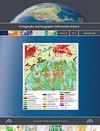滑动vs多视图:使用眼动追踪来评估用户与网络地图交互的综合分析
IF 2.4
3区 地球科学
Q1 GEOGRAPHY
Cartography and Geographic Information Science
Pub Date : 2022-01-25
DOI:10.1080/15230406.2021.2015721
引用次数: 2
摘要
摘要多幅地图的比较是地理学家探索世界的一个常见的基本过程。用于比较地图的最常用的交互式方法是多视图和滑动。滑动允许用户以交互方式拖动和重叠两个不同的地图。多视图基于同时并排显示多个地图。本文通过一项涉及25名参与者的眼动追踪研究,分析了这两种地图比较技术在Esri环境中的使用情况。参与者完成了两项不同的任务,使用两到四张地图比较土地适宜性。基于对记录数据的分析,我们通过回答的准确性、试验持续时间和交互式地图的各个组成元素的眼动追踪指标来比较这些方法的有效性。认知加工是通过分析感兴趣的动态区域来研究的。这种劳动密集型分析产生的结果可以使用序列图进行可视化。基于这些分析,我们得出结论,参与者在使用多个视图时更有效,尤其是在比较四张地图时。在Esri环境中使用滑动进行两张以上地图的比较是不直观的。许多参与者更喜欢在层之间简单切换,而不是交互式滑动比较。然而,当使用滑动来比较两张地图时,这种方法更有效,尤其是在认知要求高的任务中。本文章由计算机程序翻译,如有差异,请以英文原文为准。
Swipe versus multiple view: a comprehensive analysis using eye-tracking to evaluate user interaction with web maps
ABSTRACT The comparison of multiple maps is a common fundamental process used by geographers to explore the world. The most frequently applied interactive methods for the comparison of maps are multiple view and swipe. Swipe allows the user to interactively drag and overlap two different maps. Multiple view is based on the simultaneous side-by-side display of several maps. The current paper presents an analysis of the use of these two map comparison techniques in an Esri environment using an eye-tracking study which involved 25 participants. The participants completed two different tasks which compared land suitability using two or four maps. Based on an analysis of the recorded data, we compared the effectiveness of these methods through the accuracy of answers, the trial duration, and eye-tracking metrics of the individual compositional elements of the interactive maps. Cognitive processing was investigated through the analysis of dynamic areas of interest. This labor-intensive analysis yielded results which could be visualized using sequence charts. Based on these analyses, we concluded that the participants worked more effectively with multiple views, especially in comparing four maps. Working with swipe in the Esri environment is non-intuitive in comparisons of more than two maps. Many participants instead preferred simple toggling between layers instead of interactive swipe comparisons. However, when swipe was used to compare two maps, the method was more efficient, especially during cognitively demanding tasks.
求助全文
通过发布文献求助,成功后即可免费获取论文全文。
去求助
来源期刊
CiteScore
5.20
自引率
20.00%
发文量
23
期刊介绍:
Cartography and Geographic Information Science (CaGIS) is the official publication of the Cartography and Geographic Information Society (CaGIS), a member organization of the American Congress on Surveying and Mapping (ACSM). The Cartography and Geographic Information Society supports research, education, and practices that improve the understanding, creation, analysis, and use of maps and geographic information. The society serves as a forum for the exchange of original concepts, techniques, approaches, and experiences by those who design, implement, and use geospatial technologies through the publication of authoritative articles and international papers.

 求助内容:
求助内容: 应助结果提醒方式:
应助结果提醒方式:


